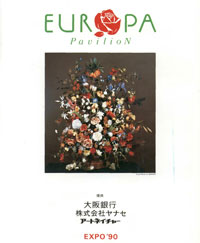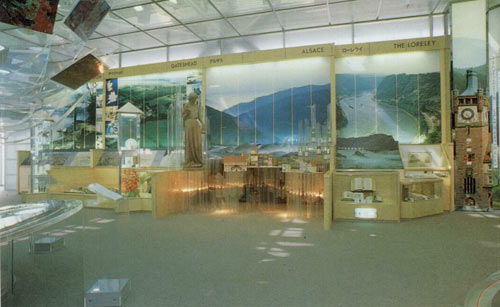- Producer: Louis-Sato – Shinya Izumi
- Design and Coordination: Sato et Associes (Paris), Leonardo Fiori (Milan), Gillespies (Glasgow), Edmund Spohr (Düsseldorf)
- Projectmanagement and Supervision: G.Depond, J.Mazzolini, S.Boogaerts
- Architects: P.Varier, E.Spohr, S.Nelson, R.Guiliani, P.Roy
- Showcase Display: R.Sirouy
- Entrance Decoration: A. Lutsky
Architektur
we will help you to build a dream
Innenraumgestaltung

Auf der EXPO´90 in Osaka wurde der Europapavillon als Teil des „International Friendship Pavillion“ realisiert. 20 europäische Städte präsentierten ihre Botschaft in Osaka. der Pavilion diente dem besseren Verständnis der Menschen in der Welt. Das Architekturbüro Spohr bearbeitete die Präsentationen von Deutschland (Pforzheim), Finnland (Arabia), Österreich (Wien) und VR Ungarn (Budapest).

Design, Planung und Projektmanagement
lag in den Händen des EUROPA DESIGN AND PRODUCTION TEAM


From time immemorial the local legend had it that the cliffs of the Loreley on the Rhine, near Oberwesel, were something extraordinary and dangerous. Supposedly, immense treasures were buried there. It was only during the Romantic period that the rock started appearing in German lyrics. Heinrich Heine’s poem about the Loreley, which became a folk song, was first published in 1824. In those 6 verses, Heine succeeds in poeticizing the Rhine landscape in a unique way. Sunset and rocky cliffs merge into one bewitching picture of a siren who robs the bargees passing by on the Rhine, of their senses and their lives. The poem was also set to music by Friedrich Silcher. It was above all this composition which made Heinrich Heine’s poem into the melancholy and yearning song of the German Rhine. A colour lithography by Caspar Scheuren, belonging to the Düsseldorf City Museum, completes the presentation from the stock of the Heinrich-Heine-Instiute in Düsseldorf.

Das Schmuckmuseum in Pforzheim besitzt Tausende von Originalen aus der ganzen Welt, die in einem Zeitraum von 4500 Jahren entstanden sind. Gezeigt wurde Schmuck aus der europäischen Kultur bis in die Gegenwart, griechische Antiquitäten, Schmuck aus dem europäischen Mittelalter und der Renaissance bis zum Jugenstil.
Für die Präsentation des Schmucks aus Pforzheim wurden die Schmuckvitrinen vom Architekturbüro Spohr in Düsseldorf entworfen und die Ausführung in Osaka überwacht.





